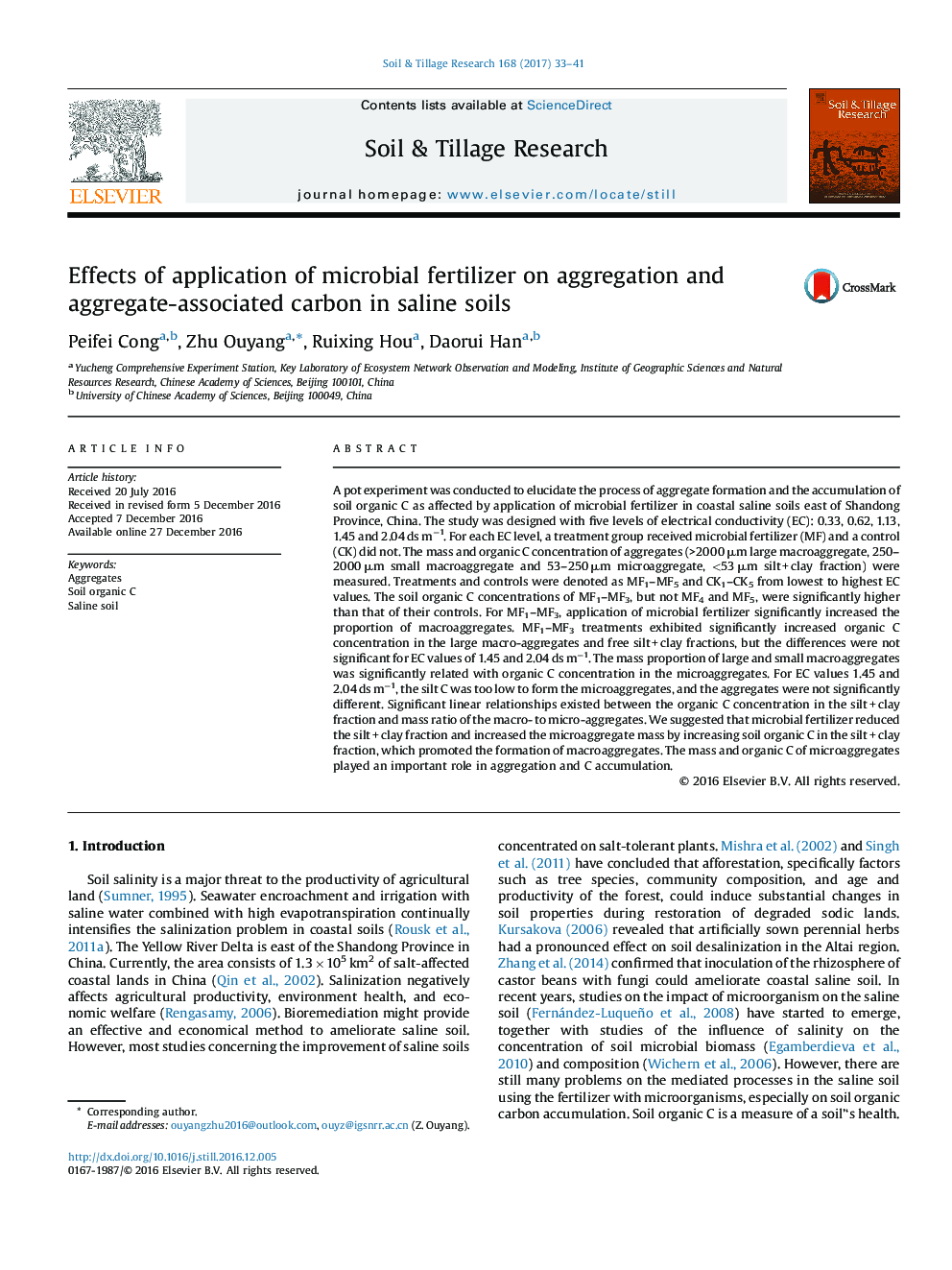| کد مقاله | کد نشریه | سال انتشار | مقاله انگلیسی | نسخه تمام متن |
|---|---|---|---|---|
| 4927547 | 1431835 | 2017 | 9 صفحه PDF | دانلود رایگان |
- The application of microbial fertilizer improved soil organic C.
- Applying microbial fertilizer increased the mass proportion of macroaggregates.
- The mass ratio of free silt + clay fraction (SC) decreased during improving soil.
- The aggregate-associated carbon mainly was in SC subfraction rather than in iPOM.
A pot experiment was conducted to elucidate the process of aggregate formation and the accumulation of soil organic C as affected by application of microbial fertilizer in coastal saline soils east of Shandong Province, China. The study was designed with five levels of electrical conductivity (EC): 0.33, 0.62, 1.13, 1.45 and 2.04 ds mâ1. For each EC level, a treatment group received microbial fertilizer (MF) and a control (CK) did not. The mass and organic C concentration of aggregates (>2000 μm large macroaggregate, 250-2000 μm small macroaggregate and 53-250 μm microaggregate, <53 μm silt + clay fraction) were measured. Treatments and controls were denoted as MF1-MF5 and CK1-CK5 from lowest to highest EC values. The soil organic C concentrations of MF1-MF3, but not MF4 and MF5, were significantly higher than that of their controls. For MF1-MF3, application of microbial fertilizer significantly increased the proportion of macroaggregates. MF1-MF3 treatments exhibited significantly increased organic C concentration in the large macro-aggregates and free silt + clay fractions, but the differences were not significant for EC values of 1.45 and 2.04 ds mâ1. The mass proportion of large and small macroaggregates was significantly related with organic C concentration in the microaggregates. For EC values 1.45 and 2.04 ds mâ1, the silt C was too low to form the microaggregates, and the aggregates were not significantly different. Significant linear relationships existed between the organic C concentration in the silt + clay fraction and mass ratio of the macro- to micro-aggregates. We suggested that microbial fertilizer reduced the silt + clay fraction and increased the microaggregate mass by increasing soil organic C in the silt + clay fraction, which promoted the formation of macroaggregates. The mass and organic C of microaggregates played an important role in aggregation and C accumulation.
Journal: Soil and Tillage Research - Volume 168, May 2017, Pages 33-41
